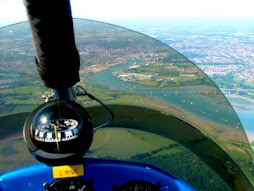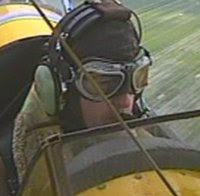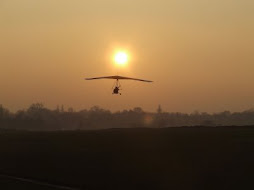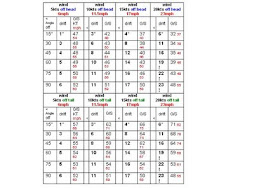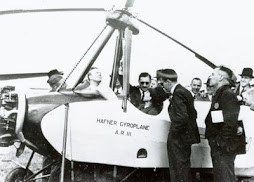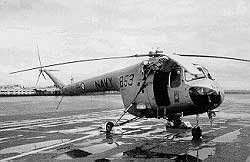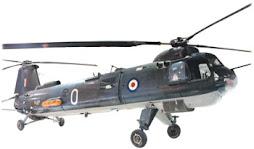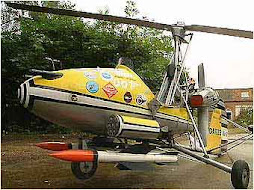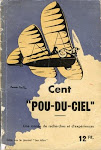Thursday 31 July 2008
Evening flying
Incredibly kindly, Cath has contacted an instructor who may take me on for evenings, under the auspices of the school, seeing as I am here all the time anyway.
Everyone at Flylight is getting ready for Popham. I have a lesson for Sunday morning, so will need to be able to get back if I go down, which may well mean driving...but there is a slight chance of getting a seat in somebody's aeroplane, which would be fantastic.
I have decided to be cheeky and ask people on the field whether I can make myself useful as congenial, talking ballast. Since I have been here I have seen several Tiger Moths (which are operated by Delta, who do joyrides), Chipmunks, a Harvard, numerous helicopter types and others.
Flying at Sywell
Phil is an easy bloke to get on with. He knows his stuff, having flown on various types for 15 years. He was a paramedic before becoming a flying instructor and among other things, has been a professional musician, so an interesting guy. What I appreciate about him most, though, is his thoroughness, which appeals to me, as I am someone who likes things logical and tidy. After the rogues I have dealt with in flying instruction in the past, it is good to be dealing with someone very professional (and I am not just saying that because he will be reading this!)
I really feel I made progress today, mainly because I managed to get my head out of the cockpit; I have a tendency to try to fly by instruments rather than looking at my aircraft attitude etc in relationship to the horizon, etc. That was a lot better today. But the biggest breakthrough, in my opinion anyway, was that I understood for the first time why we adjust the trim, which is done on the GT450 with an electrically powered adjuster! State of the art stuff - this aircraft is a Formula 1 compared to the stuff I flew before. My first hour I got her up to 98mph.
At this point I must stress that nobody should use this blog as a manual. I may be writing complete bollocks....and the reader who knows anything about this will probably spot any misunderstanding straight away. About the trim: if the aircraft is flying too fast when you are flying at optimal revs, you'd normally push the bar forward, increasing the drag on the wing....but if you do this you may find the wing very heavy, so you adjust the trim, which adjusts the wing by pulling on bungees attached to the struts to tension them (increasing the camber, I think. Is that right, Phil? - "No" - please see link)
Until today's lesson I could adjust the trim with the toggle switch, watching the LED to see if we were going to speed up or slow down, but I wasn't sure WHY we were doing it. That may seem obvious, but the fact is that when you are new you are thinking about loads of stuff at the same time.
And to think, you have to be fresh and fed, which brings me on to life on the airfield. I am camping - effectively living out of boxes stored at the back of the hangar and out of the back of the car. Everyone has been very accommodating; I have mooched around quite a lot and I must be a bit of a nuisance (watching structural tests on the Dragonfly (which is the one I am thinking of owning), "helping" Bernie, who is building something similar to a Dragonfly (about such things, more later), etc, when they are all trying to get on with work. I have cycled out a bit - intend to do much more - let them all get on.
Also camping, in a hammock in the hangar, is Dr Paul, an engineer contracted to do some scary maths and fun testing (will provide a link to YouTube, when they go live on the latter). Really nice chap.
I will let you know about what goes on at Sywell and at Flylight in particular later. It is an absolutely fantastic place. Incidentally, I didn't bring the drivers for downloading pics, so can't do that just now, but will later.
Watch this space
(will sort typos later)
Monday 7 July 2008
not a REAL aeroplane!?

 .
.At Flylight I took a bunch of photos of the Dragonfly. It is an incredible bit of kit. Enjoy these and if you are inspired, get up to Sywell and have a look for yourself. Unfortunately, I haven't seen it in action yet but the films on their site are really exciting.
.JPG)
.JPG)
.JPG)
I have my heart set on having one of these
but I will be learning on one of these....and these are a heck of a lot better than the old things I started learning on the first time round.

.
Sunday 6 July 2008
An SSDR Flying Flea?
In the 1980s I fell in love with the Flying Flea. An old geezer in a pub told me that he knew of one in someone's loft and I was intrigued. I never did find the Flea in question, but it got me reading about them and I got a translation of Henri Mignet's 1934 book, Le Sport de L'Air in which the aeroplane's designer shares his philosophy and describes the process for constructing one.
The cut-away drawing was produced by "The Aeroplane" and three issues of 1935's Newnes Practical Mechanics showed people how to build the Flea. Mignet, an amateur who had been turned down for the French air force and who said that he had found conventional aeroplane controls illogical and counter-intuitive, designed his aeroplane to be easily mastered by a novice and built by anyone capable of constructing a packing-case.

Mignet was a 1930s microlighter! Modern microlighters ought to find his articulated wing intriguing because like the weightshift's, the whole wing pitches, while as with any other 3-axis, yaw is down to the rudder. I am not quite certain about roll, but I believe it was induced by a combination of the leading wing and the rudder. Strictly speaking I suppose it is a 2-axis rather than 3-axis aeroplane.
 an amateur builder/flyer in his original model HM-14
an amateur builder/flyer in his original model HM-14
Numerous enthusiasts did build the Flea but there was a spate of crashes which got the type grounded by the Air Ministry here while the Royal Aircraft Establishment wind-tunnel tested the type to work out why it kept crashing (film of Mignet, and Mr Appleby crashing). In 1990 I pored over and annotated RAe notes to try and grasp what had gone wrong.

Mignet also added control struts to make the rear wing "conjugate", but the bad publicity meant that even when the ban was lifted, few people had any faith in Fleas. Mignet did carry on building his designs and I think they are still popular in the USA, where there is a far more liberal attitude towards experimental aircraft.
Luckily I went no further with my plans at the time. The fact is that while I could have built a very respectable packing-case, I am confident I would have built a death-trap if I had then attempted a Flea. That was before I studied industrial design or knew anything really about engineering.
A few days ago I saw in the 2001 edition of World Directory of Leisure Aviation that there is someone selling plans for a Pou Bébé with an empty weight of 110kg and it got me thinking. Could a Flying Flea be built by an amateur and flown as a de-regulated microlight?


See wikipedia about the Flying Flea
*
The photo below is of a paper model I made of the Flea from a design at Fiddlers Green (an American paper modelling site). There is no need to pay for the model if you would like a copy. Chip won't mind me sharing it with enthusiasts; he is very generous that way.

.
Saturday 5 July 2008
Paid!
It is hard to convey just how exciting this is for me. I have always wanted to be a pilot!
Cath even said there is a computer in the club room for students to check weather etc, which I can use to update this blog. I hope to record my progress.
Thursday 3 July 2008
De-regulation
 Ace Magic Laser with a Rotax 447 engine
Ace Magic Laser with a Rotax 447 engine .JPG) Viera, cross between Batplane and Noddy-plane
Viera, cross between Batplane and Noddy-plane I am in love with three new microlights, one of them three axis, the other two, weightshift. All three of them weigh under 115kg (empty), so that they qualify as de-regulated aircraft. De-regulation is unheard of. The trend is almost always towards rule-making, constraints, hand-tying....but along comes the CAA and says that as long as you are only really likely to kill yourself, you can build and fly an unregistered aircraft, never have to submit it for testing, etc.
Brilliant.
That said, all three of my new love-affairs have been rigorously tested to comply with American FAA standards (the Viera also complies with Czech stds). They are the Dragonfly (really a powered hang-glider with real soaring capabilities and a trike) with a retractable undercarriage, a very economical engine and beautiful lines, designed by Ben Ashman at Sywell, which is where I am learning to fly.
Then there is a Rotax 447 powered Ace Magic with a Laser wing, which is designed by a Brit, built in India and to be marketed here by P&M Microlights (a leader in the British market). This machine has real microlight performance while being small enough, like the Dragonfly, to fit in the back of a car with the wing on the roof.
The Viera was suggested to me by Cath Vickers at Sywell, who said that she sort of imagined that it would be my kind of thing. Not sure how to take that! Either she thinks I am an innovative type, confident of my manhood or she thinks I am a knob! The Viera is a very funny looking aeroplane. Again, it is deregulated, can pack down pretty small and weighs less than its pilot. It has this really funky Batmobile style control column and the pilot is effectively sitting on the leading edge of the wing behind an engine mounted on a snoot. Peculiarly cute. Here's what people have been saying about it.



a tricyle undercarriaged alternative - more conventional but somehow less cute
The Ace Magic will be selling for £8,000. The version of the Dragonfly I have my eye on is about £10,000 and the Viera will sell for about £8,500 if I assemble it myself or £12,000 factory built. Learning to fly is reckoned to take one hour per year of age, so it will be rather more expensive than I originally budgeted for and will eat into my aeroplane budget. I will just have to wait and see what I can work out once I have my licence.
Of course, if I get the Viera, having got my licence on weightshift, I will need about ten hours conversion, but talking to the people at Sywell, who are as enthusiastic about 3-axis as about weightshift, the conversion is very straighforward. I would love to be able to fly both types. Previously you were always expected to choose.
My mortgage company say the money is on the way to my bank right now! Very exciting.
Tuesday 1 July 2008
This year I am learning to fly - finally!
I hope to log my experiences here.


.JPG)



